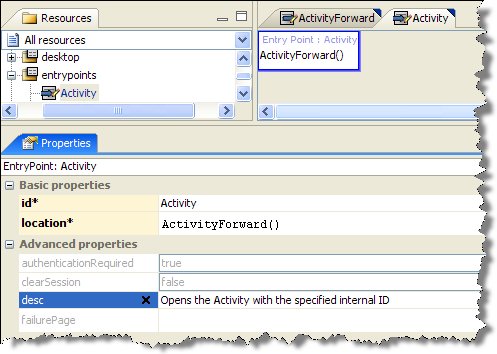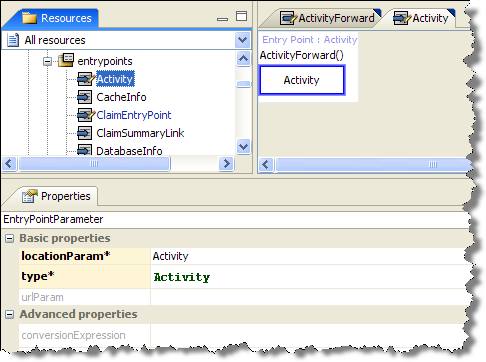Entry points
An entry point takes the form of a URL with a specific syntax. The entry URL specifies a location that a user enters into the browser. If the PolicyCenter server receives a connection request with a specific entry point, PolicyCenter responds by serving the page based on the entry point configuration.
To implement this functionality, you must
create an EntryPoint PCF
(in the entrypoints
folder). The following graphic illustrates an EntryPoint PCF.

The EntryPoint PCF contains
the following parameters:
|
Specifies that PolicyCenter must authenticate the user before the user can access the URL. If true, PolicyCenter requires that the user already be authenticated to enter. If the user is not already logged in, PolicyCenter presents a login page before rendering the entry point location. The default is |
|
If |
|
Currently, does nothing. |
|
Specifies the page to send the user if PolicyCenter cannot display
the entry point. Failures typically happen any time that the data
specified by the URL does not exist. The default is
|
|
Required. The PolicyCenter uniform resource identifier
to show, minus its For example, if the URI is |
|
Required. The ID of the page, Forward, or wizard to which you want to go. Guidewire recommends that if you want the entry point to perform complex logic, use a Forward. See Create a Forwarding EntryPoint PCF for a definition of a forward. |
Each EntryPoint
PCF can contain one or more EntryPointParameter
subelements that specifies additional functionality.

The EntryPointParameter subelement
has the following attributes:
|
Gosu expression that PolicyCenter uses to convert a URL parameter to the value passed to the location parameter. |
|
Currently, does nothing. |
|
Required. The name
of the |
|
Specifies whether
the parameter is optional. If set to |
|
Required. Specifies
what type to cast the incoming parameter into, such as |
|
The name of the parameter passed with the URL. For example, if the
|
